Drori Mondlak: interview with the American drummer
Drori Mondlak co-leads the quartet KLARO! together with alto saxophonist Karolina Strassmayer and is now based in Cologne. He worked in New York City for over twenty years and performed with Frank Foster, Joe Williams, Don Friedman, Chris Potter, Lew Tabackin, Bill Charlap, Danny Mixon, Ernestine Anderson, Warren Vache, Lynn Seaton, John Hicks and many more. In Europe he has performed and/or recorded with Lee Konitz, Sonny Fortune, Karolina Strassmayer, Barbara Dennerlein, David Friedman, Lynne Arriale, Chico Freeman, Alan Skidmore, Cary DeNigris, Stefan Bauer, Tony Lakatos, Nicolas Simion, Paul Heller, Elena Ledda, Kalman Olah and Fritz Pauer. With KLARO! he recorded 'Of Mystery And Beauty' (2016),'Small Moments' (2013) and 'Joining Forces' (2011). As bandleader he also released two recordings: 'Point In Time' and “Wake-UP Call”.
'The precision, speed and reserved strength of Mondlak’s drumming are reminiscent of Joe Morello in his early years with Dave Brubeck.' That is a remarkable statement by Doug Ramsey (Arts Journal, Rifftides) about Drori Mondlak whom I met before he was due to perform with KLARO! together with Karolina Strassmayer (sax), Stefan Bauer (vib) and Martin Gjakonovski (bass) at the Dachtheater Warendorf in March 2017.
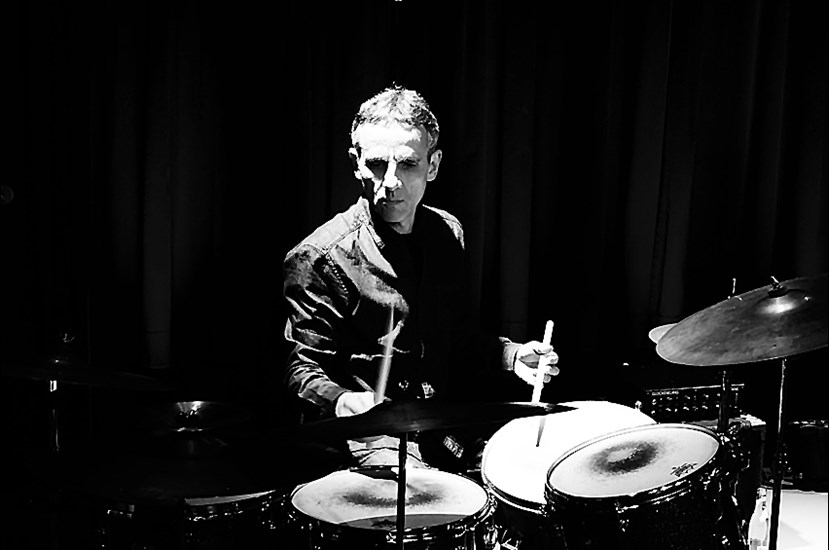
How important was music during your childhood? Was it a substantial part of your upbringing?
DM: It was a very important part of my childhood because my mother was a classical pianist. She was not a professional pianist in the sense that she made a living from it but she loved music deeply and played all the time with tremendous passion. Her favourite pieces to play were a few of the Beethoven sonatas. Around the age of five I started piano lessons with an Italian teacher in Mexico City and I played until the age of nine. My mother also played some flamenco guitar. She was very much into all the arts. I really credit her for bringing music into the house. I was born in Mexico City and lived there until I was 9 years old when I then moved to London with my mother and sister and until I was 15 there was no music played in the house. We had no piano in the house. After 2 years in London we moved to New York City. I loved music and I was always listening to records and I also went to lot’s of Rock concerts later on as a teenager but I was still not playing an instrument. I loved bands like Led Zeppelin, Santana, Traffic, The Who, Cream, Jimi Hendrix. I was very much into them and the drummers too: John Bonham, Mitch Mitchell, Keith Moon, Ginger Baker. These were some of my favourite drummers at the time and I still love their playing. I wasn't listening to Jazz at that time.
How I started to play drums was by chance really. My mother had a date with a guy only twice. The first time he came over to pick her up he saw me in the living room sitting in the corner listening to my favourite album at the time, 'Low Spark of High Heeled Boys' from the group Traffic. I had my head in the stereo and was tapping the groove with my hands on my knees. He came over to me and said: 'Oh, you like the drums?’ - ‘Well, I like every instrument but sure, I like the drums.' I responded. The next time he came over he brought over a pair of sticks and a drum pad for me. Apparently, he had been an amateur drummer in the 40s or 50s. When I put the sticks in my hands they instantly felt great. After a few months I went out and bought my first snare drum and a few weeks later while walking in the lobby of my building which was a kind of complex of 18 story buildings in Queens (NY), I heard a guitarist and a bassist jamming in an apartment so I listened for a few minutes and then I knocked on the door. When they opened the door, I said to the guys inside…'I live upstairs and you need a drummer.’ - well they said ‘come down and play.' So I came down to their place but the only instrument I had was a snare drum. They said: ‘But you don't have a drum set?’ - ‘Don't worry I will get one.' But I could not afford a whole kit so I just got a ride cymbal. I was hitting the floor with my right foot as the bass drum. Eventually I ordered my first full drum set, a Rogers black diamond pearl set, a beautiful drum set.
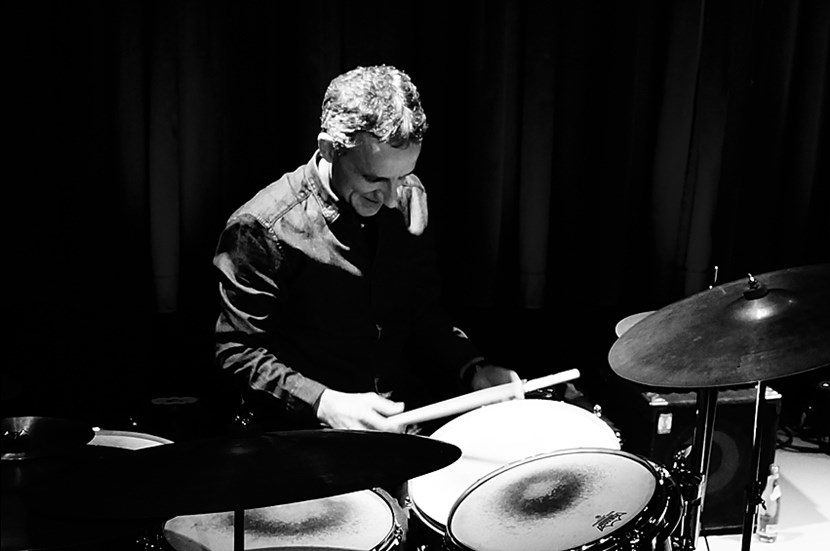
Right before my drum set came somebody called me for my first professional gig but I had really never played on the full drum set before. I did not have the coordination between my hands and feet and the feeling for the pedals but I took the gig anyway. I could not turn down the opportunity. I borrowed a set from an older drummer in the neighbourhood and I asked him to show me how to put it together as a set. I practised one beat all day and got the coordination for it together by the evening. It was actually a Bo Diddley beat and not the simplest beat for a novice drummer but I did not know that. I was able to play it with a good relaxed feel by the late afternoon and then I went to the gig. The musicians were unknown to me. It was a party for someone, you know. Whenever they called a tune and said: 'Is it okay?' I said: 'No problem.' And I played that (!) beat without stopping! After five or six songs the guys looked at me: 'What's up? You're playing the same beat over and over again.' I actually confessed in the break: 'Hey listen, I never played a full drum set before today. That is the only thing I can play right now’. The leader could not believe that I had taken the gig so I think instead of telling me to go home, he respected my guts and I think I sounded pretty good for a drummer having been playing the full set only a few hours. I got paid around 15 dollars. It was 1974 or so. That was my first pay check playing music!
Did you take lessons then? Had you been looking for a teacher?
DM: No, at the beginning I was self taught. I listened and learned some of the grooves the drummers played on the recordings that I loved. I could hear what was going on, you know. That's the bass drum, that is the hi-hat, etc. … so I imitated, got the coordination and I figured things out in little steps by listening. I had no books. It seemed like giant steps at the time when you are able to play something with your hands and then adding your feet, etc. Later on, I took some lessons from a classical percussionist for a short time. He taught me some rudiments for the hands. It was only a couple of months and then I stopped and continued to just play on my own.
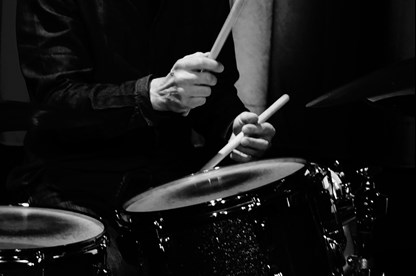
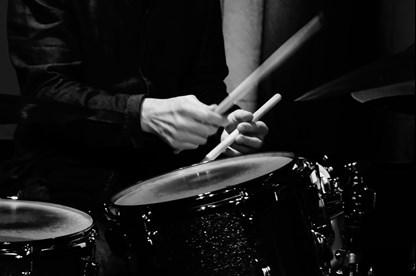
Four years later I studied with studio and big band drummer Sonny Igoe. He was the staff drummer on NBC or some other channel. I studied basic reading and syncopation, Big Band charts and the fundamentals with him. I stayed with him for only a year and then went to Jazzmobile. It was started by Billy Taylor. A very informal school up in Harlem. On Saturday mornings they used a space in a public school around 127th street in East Harlem and they got great professional jazz musicians to teach there. You had to pay only 10 dollars for six months. At the time I was the only white drummer going there. It took some real guts to go up there because the neighbourhood was tough. It was not gentrified at all. I studied with Charlie Persip there. He was a great drummer who played with Dizzy Gillespie among others. It was a class of about 30 drummers. After a year there, I stopped studying and just played. I left home when I was seventeen and went to college only for a year in Upstate New York. During this year I decided to also study vibraphone. I studied with another studio musician in NYC, Doug Allan, just to learn the fundamentals, theory and technique on the vibes. During that time I also went to Mannes College and took dictation and theory classes. It was classical based because they did not have jazz classes then. But then I went back Upstate and I started playing Jazz when I was 18 in my first jazz band called Easy Livin’.
Was Big Band Jazz your first encounter with Jazz at all?
DM: No. My very first encounter listening to jazz was when I was four years old living in Mexico. The Modern Jazz 4tet came to Mexico and played in a beautiful marble theatre there called Palacio de Bellas Artes. That was the first time that I actually saw black people in person. So here I have seen these four handsome Tuxedo dressed black gentlemen in front of this white marble of the theatre. It was quite a visual impression for a little kid and the music was great also, a kind of chamber Jazz played in a beautiful hall with great acoustics.
The father of the guitarist of the Rock band I was in was an absolute Jazz lover. He listened to WRVR Jazz radio station every day. He played the piano and could sing many Lester Young and Charlie Parker solos and knew a ton of melodies by heart from the Great American Songbook. He got me to start listening to Charlie Parker, Stan Getz, Oscar Peterson, Bud Powell and others. After some weeks I begun to like what I heard and I went out and started buying records and getting to know the music.
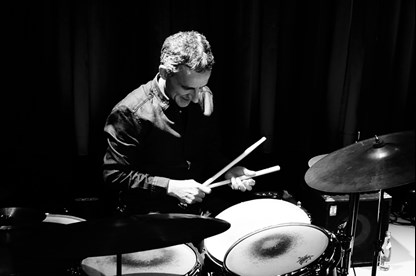
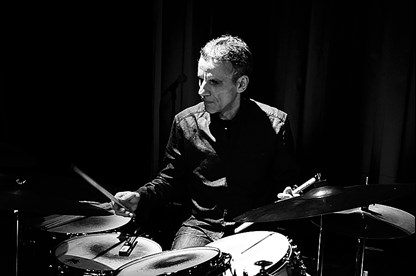
What catapulted me into playing Jazz was a concert in the Village Vanguard. It was the Elvin Jones trio playing there. Around 1974. I sat a couple of feet from Elvin, from his Hi-Hat and when he started playing I was blown against the wall. The sheer energy was unbelievable. You have to witness somebody playing with that kind of passion. It was the deciding factor for me to play Jazz even though it was not an intellectual decision or I made any concrete plans at that moment. I was 15 and was in love with what I heard!! It was the feeling, the spirit and not any sort of plan. The second concert I heard was the Bill Evans trio with Philly Joe Jones on drums. That was also an experience I will never forget. So I was listening to these masters playing their hearts out. I was blessed to be growing up in New York where the highest level of musicians were playing all the time. I got to listen to many and later I got to play with some of them as well. I heard drummers Roy Haynes, Art Blakey, Max Roach, Philly Joe Jones, Tony Williams, Joe Morello, Buddy Rich, Joe Jones, Jack DeJohnette, Billy Higgins, Mel Lewis, Steve Gadd, Art Taylor, Billy Hart, Al Foster regularly.
My first Jazz group, ‘Easy Livin’ was in Upstate New York when I was attending Bard College in Annandale-on-the-Hudson. I stayed there a year and then moved to Willow, 6 miles from the centre of Woodstock in the beautiful Catskill Mountains. I found a small one room cabin with a few acres of land and a stream in an isolated spot. I cut my own wood to heat the place with a wood stove. It was actually very close to Jack DeJohnette’s place. After a few years of this kind of country living I went back to New York City around 1984 and I made the decision to be a professional musician full time.
But you never ever attended a formal education institute like the New School or Berkley College of Music?
DM: I attended Bard College for a year studying liberal arts and also music. I also attended a couple of classes in Mannes college of Music in New York City. That was it. I was mainly self taught but there is one quite important teacher who came later. When I was 27 years old, after playing for 11 years I began to study with drummer Joe Morello, best known for his work with Dave Brubeck. I heard a record of the Brubeck 4tet called 'Gone With The Wind' with Joe on a piece called 'Swanee River'. He was tap-dancing on his snare on the intro with such delicacy. It is an American folk song. Later in the song he trades 4’s in a beautiful, delicate and subtle way with an incredible touch and technique. I never heard somebody with such control with brushes. I was really captivated by these four bar trading with Brubeck and Paul Desmond. I didn't know where Morello lived and a friend suggested that I look in the New Jersey telephone book, so I did and I found three Morellos in there and the first one I called was Joe.
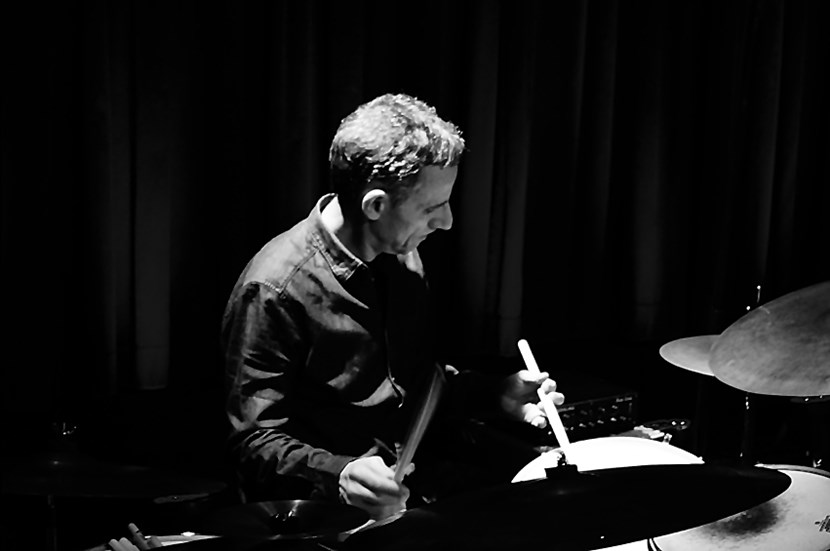
He was teaching in a little drum store in West Orange, NJ. There were 2 pads and a drum set in this tiny room in the back of the store. He blew me away on the first day. He made the drum pad sound like a violin or cello. I continued studying with him for five years. It was mostly about technique, touch, musicality and developing facility with the hands. We worked through his books and he gave me a real appreciation for the connection between technique and musicality.
Joe studied with some famous percussionists and snare drummers like George Lawrence Stone and Billy Gladstone who was the drummer at the Boston Symphony Orchestra. He wrote ‘Stick Control for the Snare Drummer', still the bible for sane drum technique. Joe wrote two books after that. When I studied with him he did not have the books published yet. He was writing some things down on napkins and then the first Master Studies book came out. I am grateful to have studied with Joe and we also became very close friends.
Later on, I studied with John Riley for a year specifically to work on reading big band charts. He had me write my own charts for Thad Jones - Mel Lewis arrangements just from hearing them. This was a great way to learn to read. Hear what you see and see what you hear!
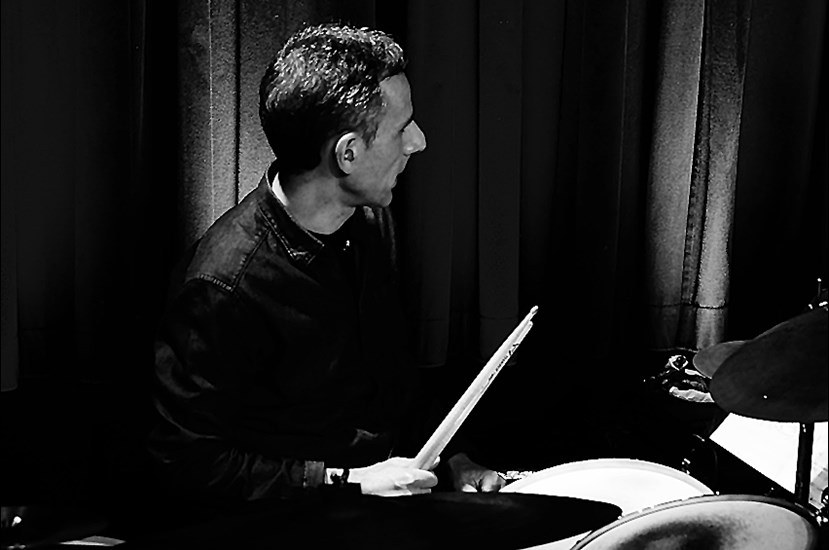
How did you develop your own style?
DM: I don't think it is on purpose at the beginning. In other words, you don’t set out to develop your own thing. The way it goes: First you want to learn about the music and what the music is and you begin slowly to understand what a drummer does in a band, in a Jazz band, It's not just keeping time or playing time. It is interacting with soloist; it's interacting with the harmony; it's laying down a frame work so that other musicians can solo over it. It's being aware of the harmony of the tune, the structure of the tune. These are all things that don't happen in one day. It's more to it than dingdingdingding.
As far as the style is concerned you might be giving me credit about my own style. I am not sure if I have my own style or not but I do feel that I did focus on trying to be myself right from the beginning or rather to hear what I play from the inside and to be myself. The reason why is that I played with a trumpet player, Michael DiSibio who was very much into the idea of developing your own voice as long as it takes and he had that influence on my thinking. That is the main reason for playing Jazz because this music affords you the opportunity to be yourself. So generally, I don’t use the word style. It cheapens the individual thing…the person behind the instrument.
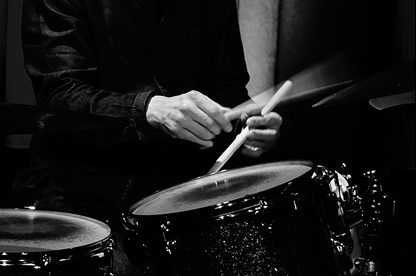
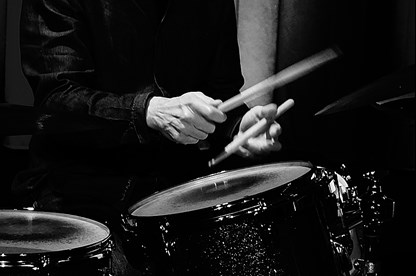
In Jazz you have the freedom to develop your own thing. Jazz is not a style. It is much deeper than that. You wouldn't say Elvin Jones is a style. He and others are great individuals. That is what you want to reach for and you have to reach inside yourself to find that. At the same time you have to learn what the masters before you have done. It is handed down through hearing people live and on recordings. It is not written down. It's not about transcriptions. Sure it is a good thing to do transcribe if you want to learn exactly what somebody is doing but the main thing is listening because that is where the soul and heart of the music is. If you never heard Charlie Parker and you get the Omnibook and you play all the solos you have no idea really who Charlie Parker is. The notes don't tell you who Charlie Parker is. It's the sound, the tone, the inflection, the feeling, the spirit and soul, all of that.
I had favourite drummers at different times. I went through periods of time when I just really got into one and listened to everything they did. Roy Haynes is one of my favourite drummers and I heard Roy maybe fifty times close-up mostly with his own groups and listened to him on recordings. It makes a big difference to be in front of a person and you get the spirit like that, you know. You hear the sound live and you get a clear idea of what it is all about. I heard a solo concert of Max Roach once and standing next to me was Shelly Manne. It was a great solo drum concert at the Newport jazz Festival. As I mentioned previously, I also heard Philly Joe Jones many, many times. I heard Ben Riley, Tony Williams, Buddy Rich, Joe Morello. I got into all these great drummers and transcribed some of their solos.
Would you think American Jazz is sort of native American music? In comparison with Europe: Is Jazz the music of Northern America?
DM: Jazz, we all know where it came from. It is ‘the’ American art form. Of course the European harmonic thing came into it but its roots came out of spirituals and the blues and blended with European harmony but the rhythmic aspect is no doubt from African music. The slaves brought over their traditions from the West Indies, from Africa. Jazz was born in America.
Would you agree with Wynton Marsalis saying Jazz is a mixture of Blues and Swing?
DM: I am not sure what he said but okay, that refers to a style. Swing was in the 30s. Benny Goodman was 'King of Swing’, and Chick Web, right. That is a style but I consider swing more in a sense of swinging, you know what I mean. Does it feel good, does it swing. I think Jazz incorporated European sensibilities as well as the blues. There are a lot of great European musicians that studied and were influenced out of the American tradition. Jazz was definitely born in America though. It is America's classical music. European music is rooted in classical composers. The Blues is an essential element of Jazz. Without the blues and the blues sensibility you don’t have Jazz.
I would like to quote Martin Luther King who addressed the audience at the Berlin Jazz Festival in 1964: ‘Jazz speaks for life. The Blues tells the story of life’s difficulties and if you think for a moment, you will realize that they take the hardest realities of life and put them into music, only to come out with hope or sense of triumph. …'. Is it true that Jazz was born out of daily hardship and squalor?
DM: The idea of paying dues and of struggle can have a positive effect on your playing because you become more appreciative for the opportunities to play. It gives you character. I do not say it in a corny way that you have to pay your dues but there is something to it. If things come too easy they don't mean as much. Definitely the depth of the feeling of Jazz has come from struggle, especially for black people in America with all the racism they have endured but also for white musicians. It is not an easy life, just to survive. We could sit here for hours and I could tell you what dues I had to pay and in which kind of places I had to live due to lack of money, living sometimes with hunger, living in apartments without heating not knowing where my next month’s rent would be coming from. Those are the everyday realities of struggle as a freelance improvising musician. I have been through all of that and still love the music as much now as I did at the beginning. My commitment stands strong.
How do you see your role in the band KLARO!?
DM: In regards to playing, I see myself as a kind of colourist in the way I like to play the drums. I have very old K Zildjian cymbals and vintage Ludwig and Leedy drums. They are beautiful sounding instruments. Over the years I acquired better drums and better cymbals as my ears got better. I love them all. My co-leader in KLARO!, saxophonist Karolina Strassmayer, writes most of the compositions that we play in the group. She is a great writer and super melodist in her playing. Her tunes are super melodic and have a lot of subtle harmonic colours, so I first check out the melody and what the tune is saying from the melodic line; what the feeling of the tune is, what story line is. I try to feel the tune and I do love those beautiful melodies!
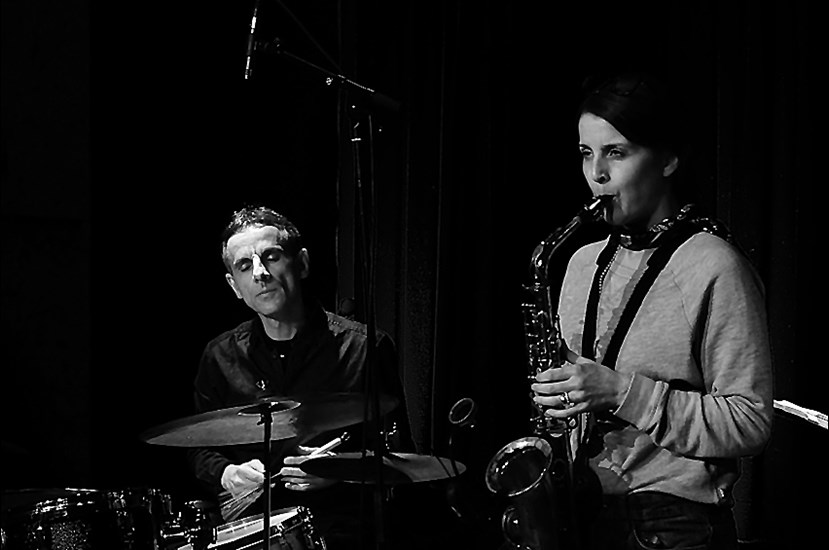
The melody dictates quite a lot to me and once I find the groove and connect with the tune, I blend the colours of my drums and cymbals with it. This happens spontaneously and develops over time. It is not an intellectual process. You get deeper into the tune the more you play it. I am also aware of the structure of the tune, so of course I play in a way that outlines that structure and then I interact with the soloists. A big part of Jazz is having conversation and as a drummer, I take full advantage of this freedom in our group. I do not see time as a metronomic thing even though we want to play as exact as possible and keep the steady tempo from beginning to end.
I see playing time like a fish swimming in the ocean. Because of the currents of the ocean it cannot swim in a straight line. It goes up and down in the water but it maintains a straight line, its direction but is pulled and pushed in different ways. Tension and release is the key. Time is a living entity in music and it is definitely not static. It moves forward and breathes. KLARO! affords me the opportunity to be myself, play what I hear and I am a featured soloist along with all the other musicians so it has given me a great opportunity to develop my soloing and I love to solo!
You play in a band with a vibraphone. It is in some respect as well a rhythmical instrument. How difficult is it to play together and to balance it?
DM: I also like vibraphone because it is very much a percussion instrument but piano is as well. So, it really depends on who is playing which instrument. But the vibraphone is very much related to the drums. You are hitting the bars with mallets, so the attack is there. I find the vibraphone a little bit lighter than the piano because of its range and its glasslike transparent sound quality. That leaves the bottom more open for the bass 'cause it doesn't go as low. Vibraphone can only be played with four mallets at a time. The piano takes up much more room sonically. The time floats in a different way with a vibraphone, like with guitar. I love guitar as well.
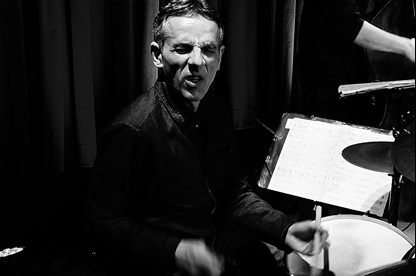
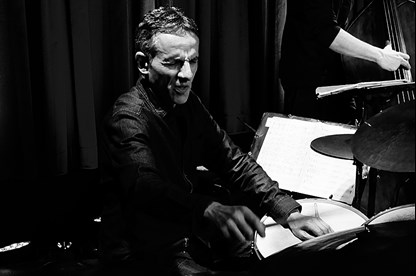
Final question: Is the drummer the most important person in the band? Or: Is the drummer the better leader of the band?
DM: The drummer has a lot of power. The drums are a very powerful instrument. You have to be very conscious of dynamics but you have a lot of power in the sense of where the music is gonna go e. g. the musical direction, whether you push a soloist or lay back, create drama and also being a real force in the music. With that comes a lot of responsibility. I would not say you are the leader of the band or the follower but you do lead even though you are an accompaniment instrument. Everybody in a group is important and each of the roles is essential. Regarding dynamics, I played with pianist Don Friedman's Trio in New York and I had to be very careful with my volume because we played in rooms many times with no mics …just acoustic. I can play powerfully with intensity but real soft in volume. The intensity does not come from the volume. I like to look at solos as story lines that grow with intensity. Some soloists come out with a bang like a bull in the arena. They play as long as they play and then get out. Other soloists start out softer and they wanna build the intensity slowly. I like that a lot and I do my best to support the soloist but at the same time have a strong impact on the music.
Thanks for the interview.
Text und Fotos: © ferdinand dupuis-panther
Informations
Drori Mondlak
http://www.drummerworld.com/drummers/Drori_Mondlak.html
http://www.drorimondlak.com/
CD reviews
http://www.jazzhalo.be/reviews/cd-reviews/k/karolina-strassmayer-drori-mondlak-small-moments/
http://www.jazzhalo.be/reviews/cd-reviews/k/karolina-strassmayer-drori-mondlak-klaro-of-mystery-and-beauty/
http://www.drummerworld.com/Videos/drorimondlaksolo2016.html
Other
In case you LIKE us, please click here:
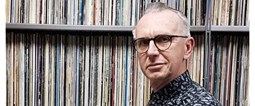
Foto © Leentje Arnouts
"WAGON JAZZ"
cycle d’interviews réalisées
par Georges Tonla Briquet

our partners:
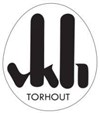
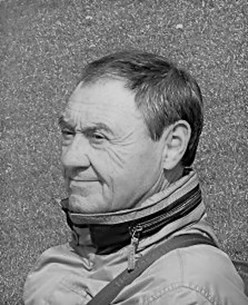
Silvère Mansis
(10.9.1944 - 22.4.2018)
foto © Dirck Brysse
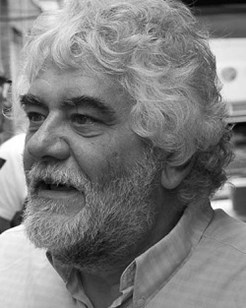
Rik Bevernage
(19.4.1954 - 6.3.2018)
foto © Stefe Jiroflée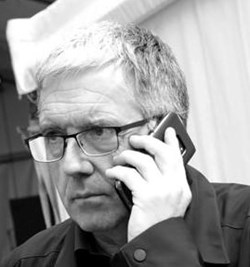
Philippe Schoonbrood
(24.5.1957-30.5.2020)
foto © Dominique Houcmant
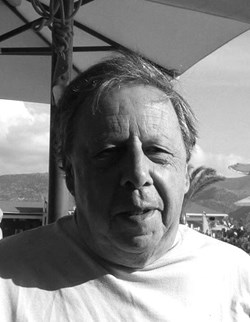
Claude Loxhay
(18/02/1947 – 02/11/2023)
foto © Marie Gilon
Special thanks to our photographers:
Petra Beckers
Ron Beenen
Annie Boedt
Klaas Boelen
Henning Bolte
Serge Braem
Cedric Craps
Christian Deblanc
Philippe De Cleen
Paul De Cloedt
Cindy De Kuyper
Koen Deleu
Ferdinand Dupuis-Panther
Anne Fishburn
Federico Garcia
Robert Hansenne
Serge Heimlich
Dominique Houcmant
Stefe Jiroflée
Herman Klaassen
Philippe Klein
Jos L. Knaepen
Tom Leentjes
Hugo Lefèvre
Jacky Lepage
Olivier Lestoquoit
Eric Malfait
Simas Martinonis
Nina Contini Melis
Anne Panther
Jean-Jacques Pussiau
Arnold Reyngoudt
Jean Schoubs
Willy Schuyten
Frank Tafuri
Jean-Pierre Tillaert
Tom Vanbesien
Jef Vandebroek
Geert Vandepoele
Guy Van de Poel
Cees van de Ven
Donata van de Ven
Harry van Kesteren
Geert Vanoverschelde
Roger Vantilt
Patrick Van Vlerken
Marie-Anne Ver Eecke
Karine Vergauwen
Frank Verlinden
Jan Vernieuwe
Anders Vranken
Didier Wagner
and to our writers:
Mischa Andriessen
Robin Arends
Marleen Arnouts
Werner Barth
José Bedeur
Henning Bolte
Erik Carrette
Danny De Bock
Denis Desassis
Pierre Dulieu
Ferdinand Dupuis-Panther
Federico Garcia
Paul Godderis
Stephen Godsall
Jean-Pierre Goffin
Claudy Jalet
Bernard Lefèvre
Mathilde Löffler
Claude Loxhay
Ieva Pakalniškytė
Anne Panther
Etienne Payen
Jacques Prouvost
Yves « JB » Tassin
Herman te Loo
Eric Therer
Georges Tonla Briquet
Henri Vandenberghe
Iwein Van Malderen
Jan Van Stichel
Olivier Verhelst



